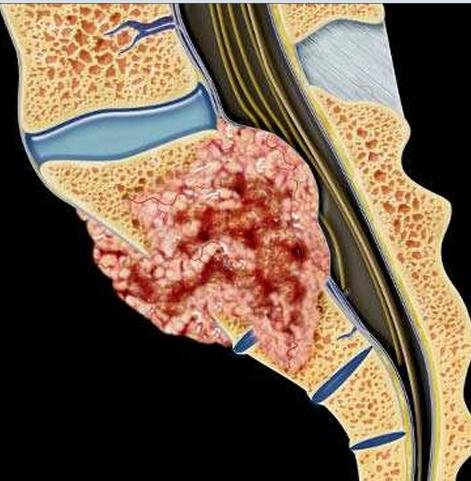Chordoma
Chordoma
Pediatric spinal chordoma is a rare, slow-growing malignant tumor that arises from remnants of the notochord along the spinal column in children and adolescents. Though chordomas predominantly affect adults, pediatric cases require specialized attention due to their unique clinical behavior and anatomical challenges. In Bangladesh, awareness about pediatric spinal chordoma is limited, leading to delays in diagnosis and treatment. Dr. Md. Nafaur Rahman, a leading pediatric neurosurgeon, offers advanced surgical management combined with multidisciplinary care to improve outcomes for children affected by this rare spinal tumor. What is Pediatric Spinal Chordoma? Chordomas originate from embryonic notochordal tissue and typically develop along the axial skeleton, including the sacrum, mobile spine (cervical, thoracic, lumbar), and skull base. In children, spinal chordomas: Are exceedingly rare but can cause significant neurological impairment Exhibit slow but locally aggressive growth Tend to invade surrounding bone, soft tissue, and neural structures Pose surgical challenges due to proximity to the spinal cord and critical neurovascular elements Causes and Risk Factors Pediatric spinal chordoma arises from congenital remnants of the notochord; no clear environmental or hereditary risk factors have been established No known prevention strategies The tumor’s indolent nature often leads to late clinical presentation Early detection is key to preserving neurological function and spinal stability Clinical Presentation in Children Symptoms usually develop gradually and may include: Persistent, localized back or neck pain that worsens over months Progressive weakness or numbness in limbs due to spinal cord or nerve root compression Spinal deformity or palpable mass in some cases Difficulty walking, loss of balance, or coordination problems Bladder or bowel dysfunction in advanced disease Delays in diagnosis are common due to nonspecific symptoms Diagnostic Workup Timely and accurate diagnosis relies on comprehensive clinical and radiological assessment: Clinical Evaluation Detailed neurological examination Assessment of spinal tenderness, deformity, and neurological deficits Imaging Studies MRI of the spine is the gold standard to assess tumor extent, spinal cord compression, and soft tissue involvement CT scan to evaluate bony destruction and plan surgical resection X-rays may reveal bone erosion but are less sensitive Biopsy to confirm diagnosis via histopathology and immunohistochemistry Treatment Approach in Bangladesh Effective management requires a multidisciplinary team including pediatric neurosurgeons, oncologists, radiologists, and rehabilitation specialists. Surgical Management by Dr. Md. Nafaur Rahman Goal is maximal safe tumor resection to relieve neurological symptoms and prevent progression Surgery involves decompression of the spinal cord and spinal stabilization using advanced microsurgical techniques and instrumentation Achieving clear margins is challenging but essential to reduce recurrence risk Minimally invasive approaches may be considered depending on tumor location and size Adjunct Therapies Postoperative radiotherapy is often recommended due to the tumor’s tendency for local recurrence Chemotherapy generally has limited role but may be considered in select cases Rehabilitation is vital for restoring neurological function and mobility Prognosis and Follow-Up Pediatric spinal chordomas have a risk of local recurrence and require long-term surveillance with periodic imaging Early diagnosis and complete surgical removal improve neurological outcomes and quality of life Recurrences may necessitate further surgery or radiotherapy Multidisciplinary follow-up ensures prompt management of complications and supportive care Challenges in Bangladesh Limited awareness and specialized centers for rare pediatric spinal tumors Delayed referral due to nonspecific symptoms and overlap with common spinal conditions Restricted access to advanced imaging and radiotherapy facilities in many regions Financial constraints affecting continuous treatment and follow-up Need to develop integrated pediatric oncology and neurosurgery programs across Bangladesh Why Consult Dr. Md. Nafaur Rahman? Experienced pediatric neurosurgeon with expertise in complex spinal tumor surgeries Affiliated with the National Institute of Neurosciences & Hospital (NINS), Dhaka – Bangladesh’s premier neurosurgical institution Chief Consultant at Bangladesh Paediatric Neurocare Centre, specializing in pediatric neurosurgical disorders Collaborative care model ensuring personalized treatment plans combining surgery, oncology, and rehabilitation Dedication to advancing pediatric neurosurgery and increasing public awareness in Bangladesh Contact Information and Appointments Dr. Md. Nafaur Rahman Assistant Professor, Department of Pediatric Neurosurgery National Institute of Neurosciences & Hospital (NINS) Chief Consultant, Bangladesh Paediatric Neurocare Centre 📞 For Serial / Appointment: 📱 01912988182 | 01607033535 🌐 Website: www.neurosurgeonnafaur.com










